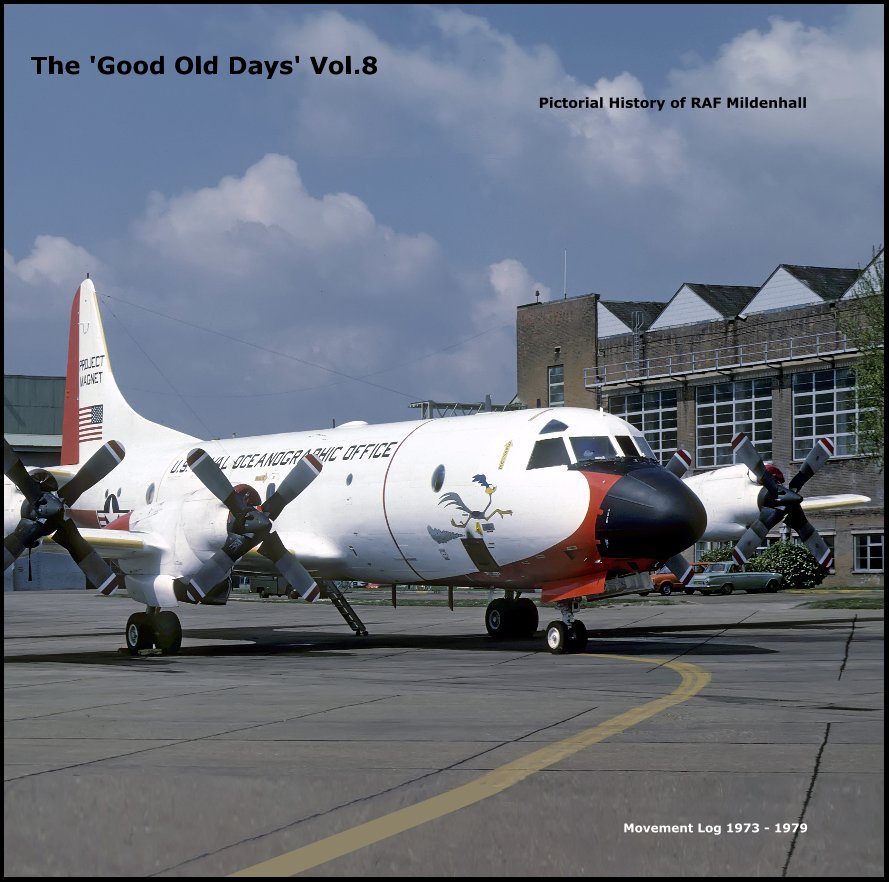The 'Good Old Days' Vol.8 Pictorial History of RAF Mildenhall
Movement Log 1973 - 1979
by Steve Hill (EMCS)
This is the price your customers see. Edit price list
About the Book
RAF Mildenhall needs no introduction to any enthusiast who has the remotest interest in military aviation. However, the present day station attracts a fraction of the movements that it did half a century ago, with the 1970s arguably the most interesting decade as the period saw radical change in aircraft types and the markings they carried. Several middle and heavyweight icons were seen for the final time during the period, including the Boeing C-97 Stratofreighter, Douglas C-118 Liftmaster, Fairchild C-119 Boxcar, Lockheed C-121 Constellation, and Douglas C-124 Globemaster. These 1940s designs were all consigned to history by the end of the 1970s. Likewise the localised transportation Douglas C-47 Dakotas and C-54 Skymasters also bowed out, rendering the Suffolk skies virtually free of the magnificent sound of reciprocating engines.
While jets had been with us for the previous three decades, those powering transports were fairly new, and were also quite noisy, as the turbo-fan was in its infancy. Colour scheme styles also began to change, as the post-war natural metal or silver finish gradually gave way to the Military Airlift Command (MAC) airliner pattern. Tactical camouflage from the late 1960s was prevalent on relevant types such as the Lockheed C-130 Hercules, along with two letter tail codes which were a very welcomed aid to unit identification. Sadly, the majority of these codes disappeared at the time this book begins, with the rotational C-130 squadrons instead receiving a MAC tail stripe, and very little else to identify unit assignments.
However, of greatest interest to the enthusiast community were the "spy planes" that added a degree of black to the otherwise colourful world. The resident Lockheed U-2 operation was bolstered in September 1974 by the first stable mate SR-71. This spearheaded more short term Blackbird visits, which gradually increased into an eventual full time presence, enabling the U-2 requirement moving to Alconbury.
While jets had been with us for the previous three decades, those powering transports were fairly new, and were also quite noisy, as the turbo-fan was in its infancy. Colour scheme styles also began to change, as the post-war natural metal or silver finish gradually gave way to the Military Airlift Command (MAC) airliner pattern. Tactical camouflage from the late 1960s was prevalent on relevant types such as the Lockheed C-130 Hercules, along with two letter tail codes which were a very welcomed aid to unit identification. Sadly, the majority of these codes disappeared at the time this book begins, with the rotational C-130 squadrons instead receiving a MAC tail stripe, and very little else to identify unit assignments.
However, of greatest interest to the enthusiast community were the "spy planes" that added a degree of black to the otherwise colourful world. The resident Lockheed U-2 operation was bolstered in September 1974 by the first stable mate SR-71. This spearheaded more short term Blackbird visits, which gradually increased into an eventual full time presence, enabling the U-2 requirement moving to Alconbury.
Author website
Features & Details
- Primary Category: Arts & Photography Books
- Additional Categories Crafts & Hobbies, United States of America (USA)
-
Project Option: Large Square, 12×12 in, 30×30 cm
# of Pages: 208 - Publish Date: May 08, 2024
- Language English
- Keywords USAF, Mildenhall, Photography, Military, Aircraft
See More

